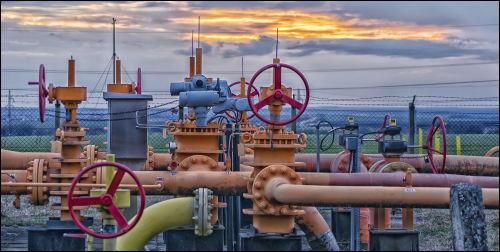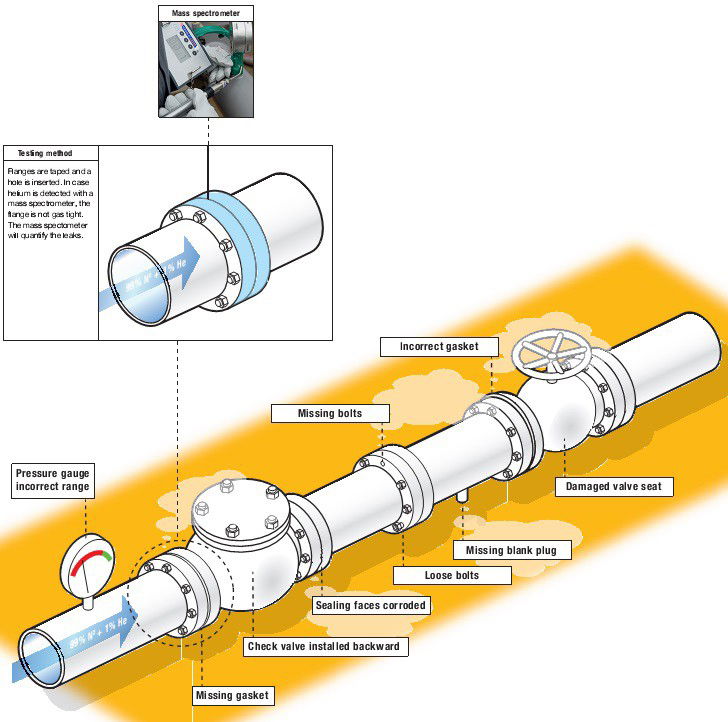Piping Leak

A small leak will sink a great ship ~Thomas Fuller

Leaks of process materials are the process industries' biggest hazard. Most of the materials handled will not burn or explode unless mixed with air in certain proportions. To prevent fires and explosions, the fuel and air in the plant should be kept separate. Nitrogen is widely used to keep air out of low-pressure equipment, such as storage tanks, stacks, centrifuges and equipment that are depressurized for maintenance.
Generally, leaks occur during maintenance, as a result of human errors, or as a result of overfilling storage tanks.

The material and/or manufacturing defects inherent in the equipment are the cause of the failure, resulting in a leak with an effective diameter of 10% of the nominal diameter (up to max. of 50 mm). This initiating event includes flange and associated gasket leaks due to mechanical or metallurgical failures. The failure modes include piping failure as well as gasket failure.
There are two variations in the Initiating Event frequency as follows:
1. Above ground Piping: Leak (Pipe Size < 150 mm; 6 in)
Generic IE frequency: 10-5/m of piping per year.
2. Above ground Piping: Leak (Pipe Size > 150 mm; 6 in)
Generic IE frequency: 10-6/m of piping per year.
Special conditions for using Generic IEF for this IE
The scenario is a single leak of a well-supported pipe with no excessive vibration, corrosion/erosion or thermal cyclic stresses.
- The leak has an effective diameter of 10% of nominal diameter (up to a max. of 50 mm)
- The leak is due to random failure as a result of mechanical, metallurgical issues or gasket leaks.
Generic Validation Method
Recommended inspection frequencies can vary based on specific industry standards, local regulations and previous inspection history.
- Periodic external inspections are conducted to look for signs of cracking or corrosion, especially under insulation.
- A number of methods can be employed to monitor piping conditions, such as external thickness measurements, ultrasonic testing, corrosion coupon testing, inspection under insulation for corrosion and ultrasonic shear wave testing for stress cracking.
Following is the incident that happened because of Pipe Leak:
CHEVRON RICHMOND REFINERY CSB FINAL INVESTIGATION REPORT - Online Link
Chevron Richmond Refinery Incident - Offline Link
Potential Hazards associated with Pipeline Leaks
All the content belongs to CCPS-Initiating Events and IPLs and CSB



